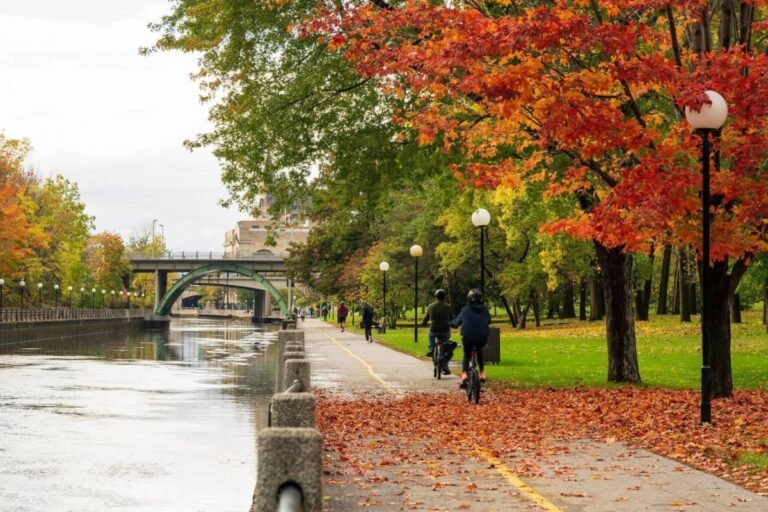Introduction to Historic Sites St. John’s
St. John’s, the capital of Newfoundland and Labrador, is a city that proudly wears its history on its sleeve. Known for its colorful row houses and rugged coastline, St. John’s is also home to a wealth of historic sites that tell the story of its rich and diverse past. From ancient military fortifications to Gothic Revival architecture, exploring these sites offers a fascinating glimpse into the heritage of North America’s oldest city. This guide will take you through the most significant historic sites in St. John’s, ensuring your journey through history is both informative and engaging.
1. Signal Hill National Historic Site
Historical Significance
Signal Hill is perhaps the most iconic historic site in St. John’s. This strategic location was the site of the final battle of the Seven Years’ War in North America and played a crucial role in the defense of the city during various conflicts. Signal Hill is also famous for the first transatlantic wireless communication received by Guglielmo Marconi in 1901, marking a significant milestone in the history of communication.
Visitor Highlights
Visitors to Signal Hill can explore Cabot Tower, built to commemorate John Cabot’s discovery of Newfoundland. The tower offers stunning views of St. John’s and the Atlantic Ocean. The visitor center provides interactive exhibits detailing the site’s history, and numerous hiking trails offer opportunities to experience the natural beauty of the area. During the summer, military reenactments and signal flag demonstrations bring the site’s history to life.
2. Cape Spear Lighthouse
Oldest Lighthouse in Newfoundland
Cape Spear Lighthouse, located at the easternmost point of North America, is the oldest surviving lighthouse in Newfoundland. Built in 1836, it has guided countless ships safely through the hazardous waters off Newfoundland’s coast. The lighthouse is a designated National Historic Site, preserving its important role in maritime history.
Visitor Experience
A visit to Cape Spear offers not only historical insights but also breathtaking views of the rugged coastline and the Atlantic Ocean. The restored lighthouse allows visitors to step back in time and experience the life of a 19th-century lighthouse keeper. Walking trails around the site offer excellent opportunities for whale watching and spotting icebergs, making it a favorite destination for nature enthusiasts and photographers.
3. The Rooms
Provincial Museum
The Rooms is Newfoundland and Labrador’s premier cultural facility, combining the Provincial Museum, Art Gallery, and Archives. This modern architectural landmark stands prominently on a hill overlooking St. John’s and its harbor, offering spectacular views alongside its cultural exhibits.
Art Gallery and Archives
The museum features a wide array of permanent and temporary exhibits, including indigenous artifacts, natural history displays, and contemporary art. The art gallery showcases works by local and international artists, while the archives hold a wealth of historical documents and photographs. Educational programs and special events make The Rooms a vibrant and engaging destination for visitors of all ages.
4. Quidi Vidi Battery
Military Heritage
Quidi Vidi Battery is a historic military installation located in the picturesque Quidi Vidi Village. Built during the Napoleonic Wars to defend against potential French attacks, the battery is a testament to the strategic military importance of St. John’s.
Visitor Experience
Today, visitors can explore the well-preserved remnants of the battery, including its barracks and gun emplacements. Interpretive panels provide historical context and insights into the life of the soldiers stationed there. The surrounding village adds to the charm of the site, offering a glimpse into the past with its narrow streets and traditional fishing stages.
5. Commissariat House
Regency Architecture
Commissariat House, a fine example of Regency architecture, was built in the early 19th century to house the office and residence of the Assistant Commissary General. This historic building provides a fascinating look at the British colonial administration in Newfoundland.
Historical Importance
The house has been meticulously restored to reflect its original condition, with period furnishings and exhibits that illustrate the daily life of its occupants. Guided tours offer detailed insights into the building’s history and its role in the colonial government.
6. Newman Wine Vaults
History of Port Wine
The Newman Wine Vaults tell the story of Newfoundland’s surprising connection to the global wine trade. Built in the late 18th century, these stone vaults were used to age port wine that was shipped from Portugal. The unique climate of St. John’s was found to enhance the flavor of the wine, making these vaults an important part of the city’s commercial history.
Visitor Experience
Visitors can tour the atmospheric vaults, learning about the history of the wine trade and the aging process. Tastings of the famous port wine are often available, providing a delightful conclusion to the tour.
7. St. John’s Anglican Cathedral
Gothic Revival Architecture
St. John’s Anglican Cathedral, formally known as the Cathedral of St. John the Baptist, is a stunning example of Gothic Revival architecture. Constructed in the mid-19th century, the cathedral has been a spiritual and cultural center for the city for over a century.
Cultural Significance
The cathedral’s intricate stained glass windows, soaring arches, and detailed woodwork make it a must-see for visitors interested in architectural history. The cathedral also hosts concerts and cultural events, adding to its significance as a community hub.
8. Government House
Colonial History
Government House, the official residence of the Lieutenant Governor of Newfoundland and Labrador, is a splendid example of Palladian architecture. Built in the early 19th century, it has been the site of numerous important events in the province’s history.
Visitor Experience
The beautifully maintained gardens and stately rooms of Government House are open to the public for tours. Visitors can learn about the history of the building and its role in the governance of Newfoundland and Labrador.
9. Colonial Building
Historical Legislature
The Colonial Building served as the seat of Newfoundland’s legislature from 1850 to 1959. This Greek Revival building witnessed many significant events, including debates over Newfoundland’s confederation with Canada.
Restoration and Tours
The building has been carefully restored, and guided tours offer insights into its architectural features and historical significance. Exhibits within the building detail the political history of Newfoundland and Labrador.
10. Railway Coastal Museum
Transportation History
The Railway Coastal Museum, housed in the historic St. John’s railway station, chronicles the history of the Newfoundland Railway and coastal boat services. These transportation networks were vital to the development of Newfoundland and Labrador, connecting remote communities and facilitating trade.
Exhibits and Artifacts
The museum features a variety of exhibits, including photographs, artifacts, and model trains. Interactive displays and educational programs provide a comprehensive overview of the province’s transportation history.
FAQs about Historic Sites in St. John’s
What are the most iconic historic sites in St. John’s?
Some of the most iconic historic sites in St. John’s include Signal Hill National Historic Site, Cape Spear Lighthouse, and The Rooms. Each site offers a unique perspective on the city’s rich history.
Can you visit historic military installations in St. John’s?
Yes, historic military installations such as Signal Hill and Quidi Vidi Battery are open to visitors. These sites provide insights into the city’s strategic importance and military history.
What architectural styles are represented in St. John’s historic buildings?
St. John’s features a variety of architectural styles, including Gothic Revival (St. John’s Anglican Cathedral), Regency (Commissariat House), and Greek Revival (Colonial Building). Each style reflects different periods in the city’s history.
Are there any historic sites related to the wine trade in St. John’s?
Yes, the Newman Wine Vaults are a unique historic site related to the wine trade. These vaults were used to age port wine, leveraging the unique climate of St. John’s to enhance its flavor.
What can you learn from visiting The Rooms?
The Rooms offer a comprehensive look at the history, culture, and art of Newfoundland and Labrador. It combines a museum, art gallery, and archives, providing a rich educational experience for visitors.
How can you explore the colonial history of St. John’s?
Visitors can explore the colonial history of St. John’s by touring sites such as Government House, Commissariat House, and the Colonial Building. These sites offer insights into the British colonial administration and the early governance of Newfoundland.
Inbound and Outbound Links
Inbound Links:
- St. John’s Tourism Board: For additional information and travel resources, visit the St. John’s Tourism Board.
- Newfoundland and Labrador Heritage: Explore more about the province’s history at the Newfoundland and Labrador Heritage.
Outbound Links:
- The Rooms: For current exhibits and programs, visit The Rooms.
- Cape Spear Lighthouse: Learn more about visiting hours and tours at the Cape Spear Lighthouse.
Exploring the historic sites in St. John’s, Newfoundland, offers a journey through time, showcasing the rich and diverse heritage of this captivating city. From ancient fortifications and lighthouses to museums and historic buildings, St. John’s provides a wealth of experiences that bring its storied past to life.



